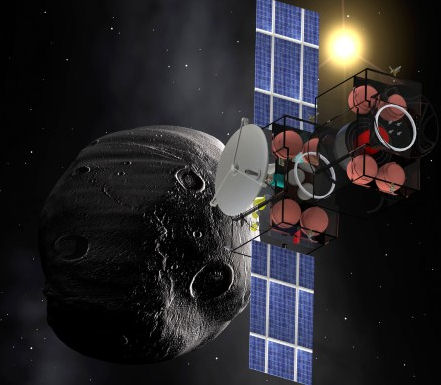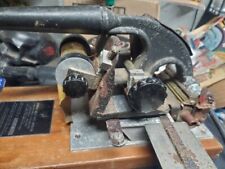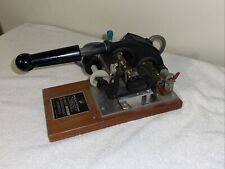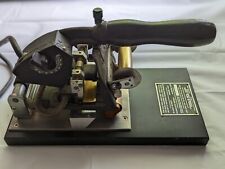
In a discovery that could lead to dramatically smaller computer chips and other electronic components, Princeton scientists have found a way to mass produce devices that are so small they are at the limit of what can be viewed by the most powerful microscopes. The achievement is an advance over current techniques, which require expensive and time-consuming procedures to create anything so small. The new technique offers a relatively simple and low-cost production method. In addition, the scientists achieved unprecedented success in packing the minute structures into dense clusters.
The researchers, led by Stephen Chou and Stephen Lyon, used a technique known as nanoimprinting, in which they press a mold into a layer of softened plastic on a silicon wafer, making microscopic patterns on the surface of the plastic. The patterns can then be transferred to the silicon where they could form the basis of miniature electronic circuits that store digital information.
The goal of the research was to determine how small and dense a pattern could be pressed into plastic with nanoimprinting, said Chou, who invented nanoimprinting in 1994. “This work really pushes the limit down to a few molecules in size,” he said.
An important aspect of the achievement is not just the small size of the ridges, but also the amount of space between the ridges, Chou said. The spacing, known as “pitch”, ultimately determines the density of electronic memory that can be packed onto a chip. In their paper, the scientists reported that they achieved a 14-nanometer pitch between ridges. They have since reduced it to 12 nanometers. That spacing is a 20-fold reduction compared to the state-of-the-art techniques used in making today’s most advanced computer chips and would result in 400 times more memory in a two-dimensional memory chip, Chou said.
The current method for making nanoscale devices is to carve each piece individually with a beam of electrons, a technique called electron-beam lithography. That process does not achieve the 14-nanometer pitch of nanoimprinting and requires equipment that is much more expensive than anything used in Chou’s technique.
The key to the result was looking for improvements in the molds used for pressing the patterns into plastic. Chou’s standard method for making a mold was to use electron-beam lithography to carve the desired pattern in a piece of silicon, which is then pressed into plastic. This approach is limited by the narrowness of the electron beam, which carves out a U-shaped channel about 20 nanometers wide.
To improve on this level of precision, Chou turned to Lyon, an expert in a technology called molecular-beam epitaxy, which Lyon uses to grow flat sheets of crystals just a few molecules thick. Members of Lyon’s lab grew alternating layers of two materials until they had a wafer hundreds of layers thick. Researchers in Chou’s lab then cut the wafer, exposing the edges of the layers. They applied a chemical that ate away one of the two materials but not the other. The result was a very fine comb-like pattern in which all the teeth and valleys were perfectly smooth and square with atomic precision. The researchers used this creation as their mold.
This mold-making process, though time-consuming, would need to be done only once in setting up a manufacturing process, said Chou. Once the mold is made, it can be used to make countless copies very rapidly.


















Comments are closed.